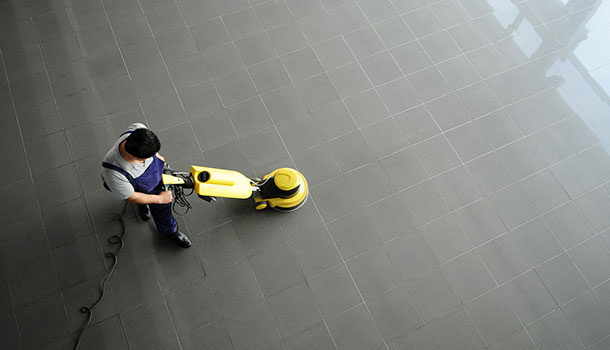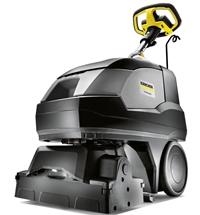
In today’s service-based industries, automation has increasingly become a critical focus for organisations striving to maximise the productivity of their workforce.
By harnessing the power of software automation, cleaning companies can streamline their operations, enhance efficiency, and achieve significant business growth.
Within the cleaning industry, software automation refers to utilising software platforms and mobile applications for streamlining workforce management, reporting, and other operational processes.
By automating manual tasks and leveraging real-time data, cleaning companies can optimise their resources, improve accuracy, and drive operational excellence.
The cleaning industry has been slower to adopt software automation compared to other service sectors such as trades and maintenance.
Many large cleaning companies still rely on paper-based and manual processes, resulting in inefficiencies and an increased likelihood of errors. Common examples of manual processes include paper reporting, data collation and manipulation, and manual adjustments to workforce planning.
However, there is a noticeable shift within the industry as cleaning companies recognise the benefits of software automation. Let’s explore some of the key advantages:
- Time savings: Software automation allows companies to allocate resources more effectively. By automating time-consuming tasks, cleaning companies can reduce the need for manual intervention and reallocate valuable time and personnel to more strategic business areas. As a result, they can achieve similar or even better outputs with fewer resources. In fact, a survey by McKinsey Global Institute suggested that service-based industries that leverage automation experience an average productivity increase of 20-35 per cent.
- More accurate data and reports: Manual data collection and reporting processes are prone to errors, leading to inaccurate reporting outputs. With software automation, cleaning companies can eliminate these risks and ensure data accuracy. Real-time data collection and automated reporting systems provide reliable insights, enabling executives to make informed decisions based on accurate information.
- Increased customer satisfaction: Software automation not only enhances internal processes but also directly impacts customer satisfaction. By implementing automation solutions, cleaning companies can provide a higher level of transparency, faster resolution to service issues, and better access to automated reporting and dashboards for their clients. Automation allows for real-time tracking and monitoring of cleaning activities. Clients can access online portals or mobile applications to view service schedules, track progress, and receive notifications when tasks are completed. Additionally, client dashboards can showcase key performance indicators (KPIs), allowing clients to track and evaluate the quality of services rendered.
Here are some examples of how software automation can be applied in the cleaning industry:
1. Workforce planning:
- Automatic generation of operational rosters based on budget considerations, ensuring profit margins are protected while optimising workforce utilisation.
- Automatic filling of open shifts using budget and qualification checks to recommend the best-suited employee for the job, reducing scheduling conflicts and improving customer satisfaction.
2. Service failures:
- Automatic notifications when an employee is late or doesn’t show up, enabling quick response and issue resolution to minimise service disruptions.
- Automatic notifications when scheduled work is not completed, ensuring contract-wide visibility of service failures and enabling proactive corrective measures.
3. Reporting:
- Automated financial reporting at a site level provides granular insights into financial performance and facilitates better cost management.
- Automated compliance monitoring and reporting, ensuring adherence to industry regulations and contract requirements.
- Automated client dashboards reporting on key performance indicators (KPIs), strengthening client relationships and meeting expectations.
4. Integration:
- Automated data flows between job management and financial systems, eliminating manual data entry and reducing the risk of errors.
- The seamless flow of budget rosters to operational rosters ensures accurate resource allocation and efficient workforce planning.
- The streamlined flow of timesheet data to operational rosters and financial systems minimises administrative burdens and enables accurate payroll processes.
- Automated data flows to reporting systems, providing real-time operational and financial performance insights.
Incorporating software automation into cleaning companies’ operations presents significant opportunities for growth, efficiency, and competitive advantage.
By leveraging technology to automate manual processes, organisations can do more with fewer resources, streamline operations, and achieve higher levels of accuracy and productivity.
To embark on the software automation journey, cleaning companies should identify critical areas within their business that heavily rely on manual processes.
Payroll and finance departments often make excellent starting points, as automating these functions can lead to immediate time and cost savings. From there, companies can expand automation to operations and workforce planning, optimising resource allocation and enhancing overall operational efficiency.
For those using multiple software solutions, it is crucial to identify areas of integration to ensure seamless data flows between systems. Integrating job management, financial, and reporting systems enables real-time data synchronisation and eliminates the need for duplicate data entry, reducing errors and improving data accuracy.
Looking ahead, the future of software automation in the cleaning industry holds even greater potential.
With the expansion of the Internet of Things (IoT) and connected devices, we can anticipate more intelligent automation. For instance, bins equipped with sensors can detect when they are full and send alerts for timely emptying. At the same time, smart soap dispensers can notify when running low, ensuring uninterrupted service.
Moreover, advancements in generative AI are set to revolutionise software automation. Imagine the ability to query business data using natural language and receive immediate results, streamlining decision-making processes and driving further efficiency gains.
In conclusion, software automation is not just a trend but a strategic imperative for cleaning companies. Embracing automation unlocks the potential to achieve higher productivity, accuracy, and profitability levels.
By investing in the right technology and implementing tailored automation solutions, cleaning companies can position themselves at the forefront of the industry, delivering exceptional service and achieving sustainable growth in today’s competitive landscape.
Ben Howden, TEAM Software by WorkWave.
This article first appeared in the July/August issue of INCLEAN magazine.
Comment below to have your say on this story.
If you have a news story or tip-off, get in touch at info@incleanmag.com.au
Sign up to INCLEAN’s newsletter.




